Samsung Galaxy Z Fold 5 vs Samsung Galaxy Z Flip 5: top to bottom or across the middle
Samsung waging foldable warfare on itself
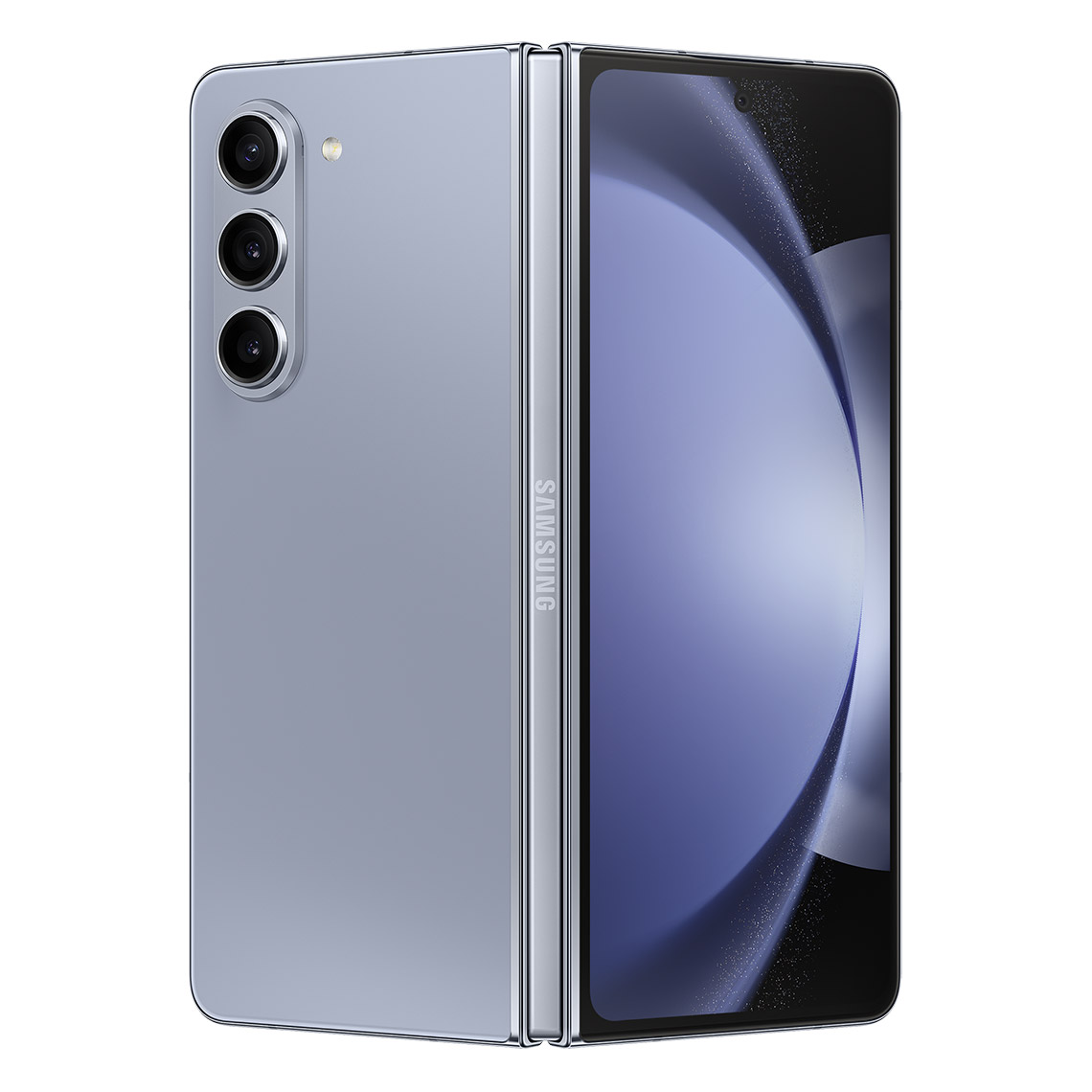
Dimensions: 154.9 x 129.9 x 6.1mm (unfolded)
Weight: 253g
Display: 7.6-inch (1812 x 2176) 21.6:18 120Hz OLED (main screen)
Chipset: Snapdragon 8 Gen 2 for Galaxy
RAM: 12GB
Storage: 256GB/512GB/1TB
Rear camera: 50MP (main) + 12MP (ultra-wide) + 10MP (3x telephoto)
Front camera: 10MP (cover display) + 4MP (main under-display)
Battery: 4,400mAh
Charging: 25W wired, 15W wireless, 4.5W reverse wireless
The Samsung Galaxy Z Fold 5 is a worthy successor to the Z Fold 4, bringing a flatter and lighter profile to an otherwise-familiar foldable formula.
Pros
- It folds flat
- Lighter and thinner
- Even snappier performance
Cons
- Cover screen now too narrow
- Good but unchanged cameras
- Should include the S Pen
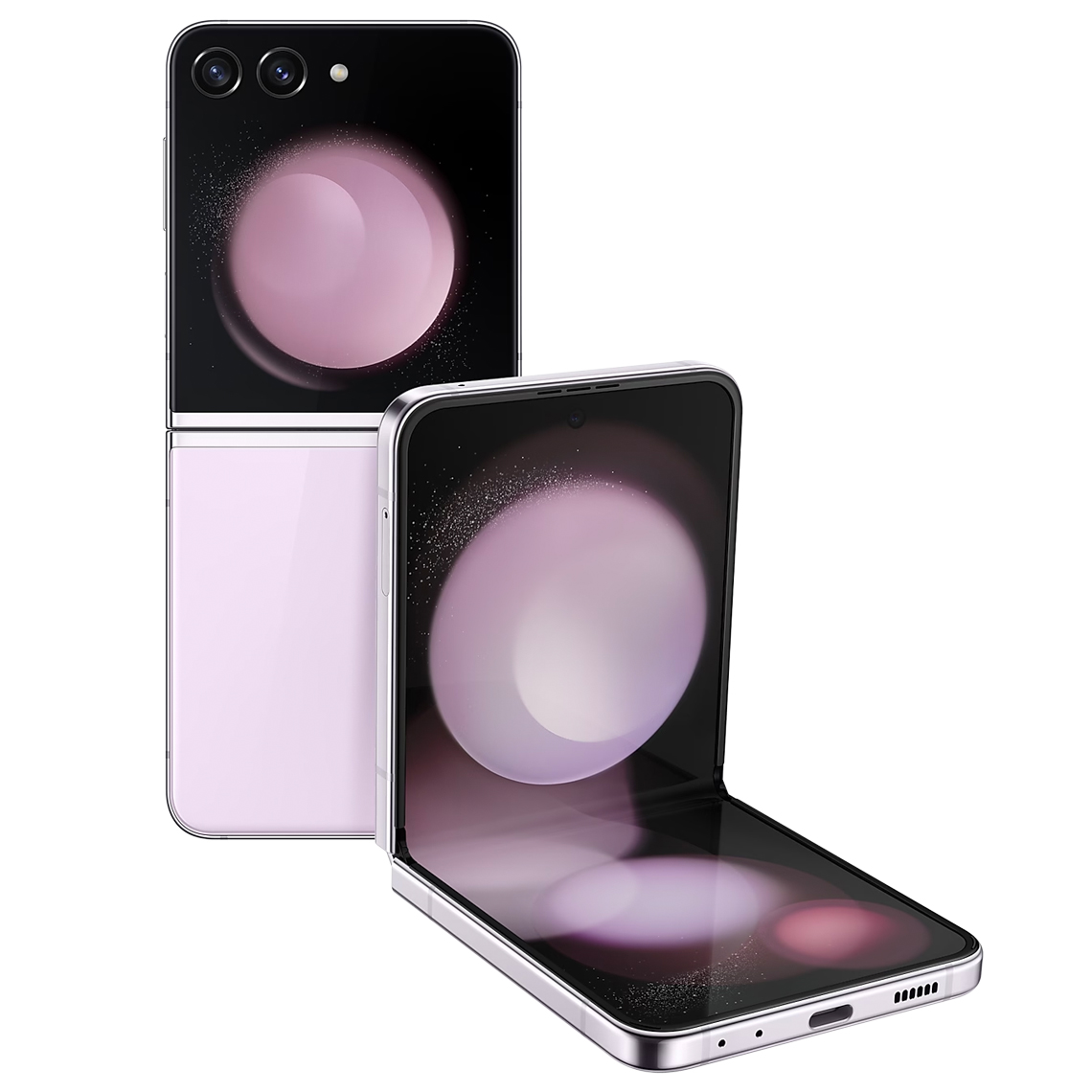
Dimensions: 165.1 x 71.9 x 6.9mm (unfolded)
Weight: 187g
Display: 6.7-inch (1080 x 2640) 22:9 120Hz OLED (main screen)
Chipset: Snapdragon 8 Gen 2 for Galaxy
RAM: 8GB
Storage: 256GB/512GB
Rear camera: 12MP (main) + 12MP (ultra-wide)
Front camera: 10MP
Battery: 3,700mAh
Charging: 25W wired, 15W wireless, 4.5W reverse wireless
The first of Samsung's stylish clamshell foldables to truly fold flat. Plus, there's now a larger cover screen and more power than any clamshell competitor.
Pros
- Excellent performance
- Superb software support
- Finally usable battery life
Cons
- Colors are a little lackluster
- Design is playing catch-up
- Better battery life needed
Samsung may not have been the first to market with a foldable phone, but when it did enter the fray it took the ball and ran with it, setting the standard for the category and defining what makes a good folding smartphone. We now have the company's latest and greatest Galaxy Z Fold 5 and Galaxy Z Flip 5 in our hands, so how do they compare?
As with their predecessors, the Fold and Flip are aimed at two different target audiences, embodied by their distinctly different forms. The Galaxy Z Fold 5 focuses on media and productivity, with its book-style hinge running top to bottom, allowing the phone to expand to become a mini tablet, suited to app multitasking and bolstered by S Pen stylus support.
The Galaxy Z Flip 5, meanwhile, folds in half horizontally to offer a more compact package that's stylish too. Its expanded cover display is great for photo and video capture, especially if you want to be in the frame and need a hands-free solution.
As per the scores above, you're getting a superb phone either way, so it's more a matter of understanding where each phone's strengths lie and whether they align with your needs. Read on to find out more or alternatively, head straight to our rundown of the latest Samsung Galaxy Z Fold 5 and Flip 5 deals, if you're already convinced on which one is the right choice for you.
Samsung Galaxy Z Fold 5 vs Samsung Galaxy Z Flip 5: specs
| Z Fold 5 | Z Flip 5 | |
|---|---|---|
| Dimensions (folded): | 154.9 x 67 x 13.5mm | 85.1 x 71.9 x 15.1mm |
| Dimensions (unfolded): | 154.9 x 129.7 x 6.1mm | 71.9 x 165.1 x 6.9mm |
| Weight: | 252.3g | 187 grams |
| Main display: | 7.6 inch (2176 x 1812) adaptive 120Hz AMOLED | 6.7-inch Full HD+ (2640 x 1080) adaptive 120Hz AMOLED |
| Cover display:: | 6.2 inch (2316 x 904) 120Hz AMOLED | 3.4-inch (720 x 748) 60Hz AMOLED |
| Chipset: | Qualcomm Snapdragon 8 Gen 2 for Galaxy | Qualcomm Snapdragon 8 Gen 2 for Galaxy |
| RAM: | 12GB (LPDDR5X) | 8GB (LPDDR5X) |
| Storage: | 256GB / 512GB / 1TB (UFS 4.0) | 256GB / 512GB (UFS 4.0) |
| OS (at launch): | Android 13 w/ One UI 5.1.1 | Android 13 w/ One UI 5.1.1 |
| Primary camera: | 50MP, f/1.8 w/ OIS | 12MP, f/1.8 w/ OIS |
| Ultra-wide camera: | 12MP, f/2.2, 123º FoV | 12MP, f/2.2, 123º FoV |
| Telephoto camera: | 10MP, f/2.4 3x optical zoom w/ OIS | N/A |
| Front Camera: | 10MP, f/2.2 (cover display), 4MP, f/1.8 under display (main display) | 10MP, f/2.2, 85º FoV |
| Battery: | 4,400mAh | 3,700mAh |
| Charging: | 25W wired charging, 15W wireless charging, 4.5W reverse wireless charging | 25W wired charging, 15W wireless charging, 4.5W reverse wireless charging |
Samsung Galaxy Z Fold 5 vs Samsung Galaxy Z Flip 5: price and availability
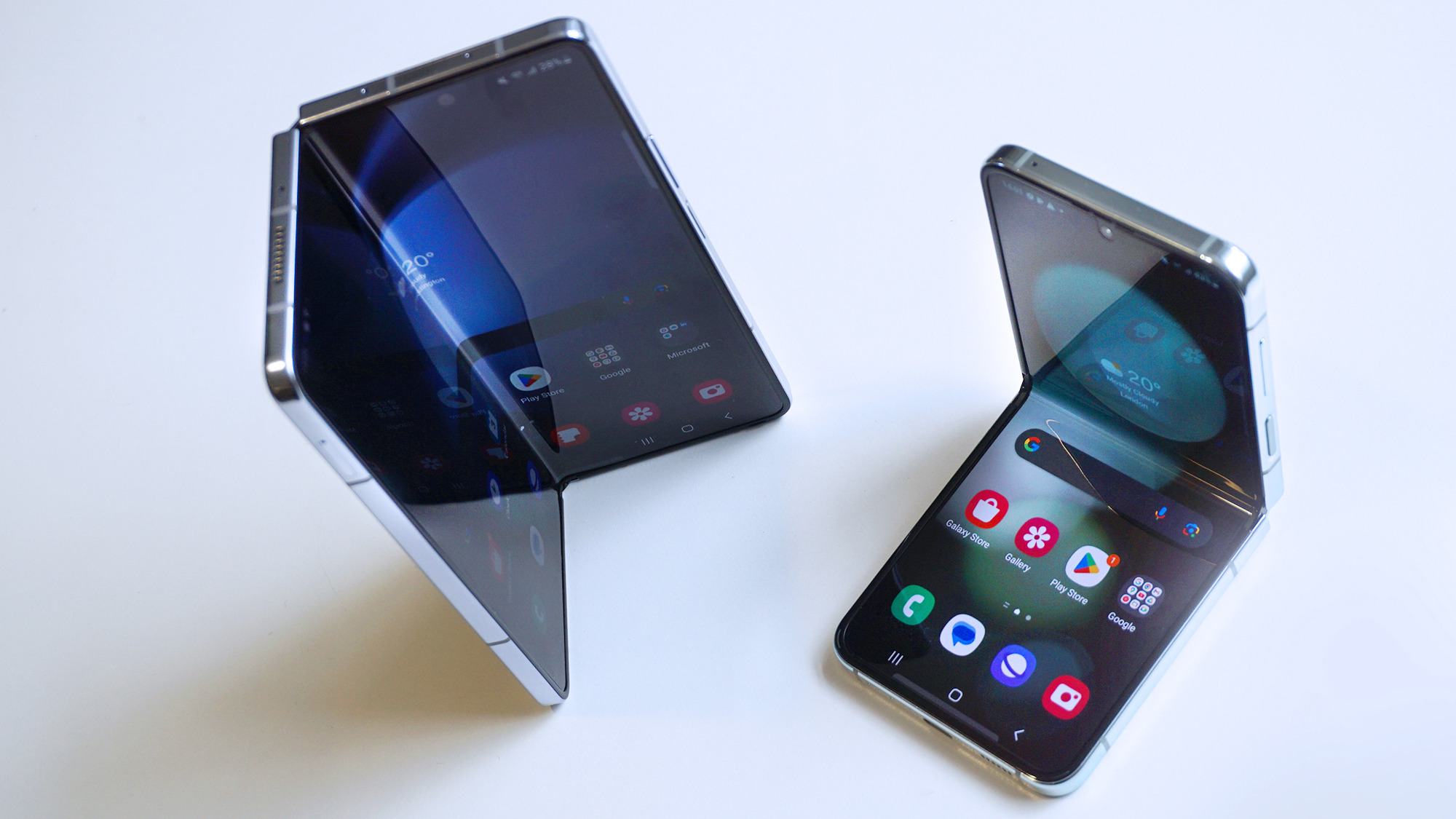
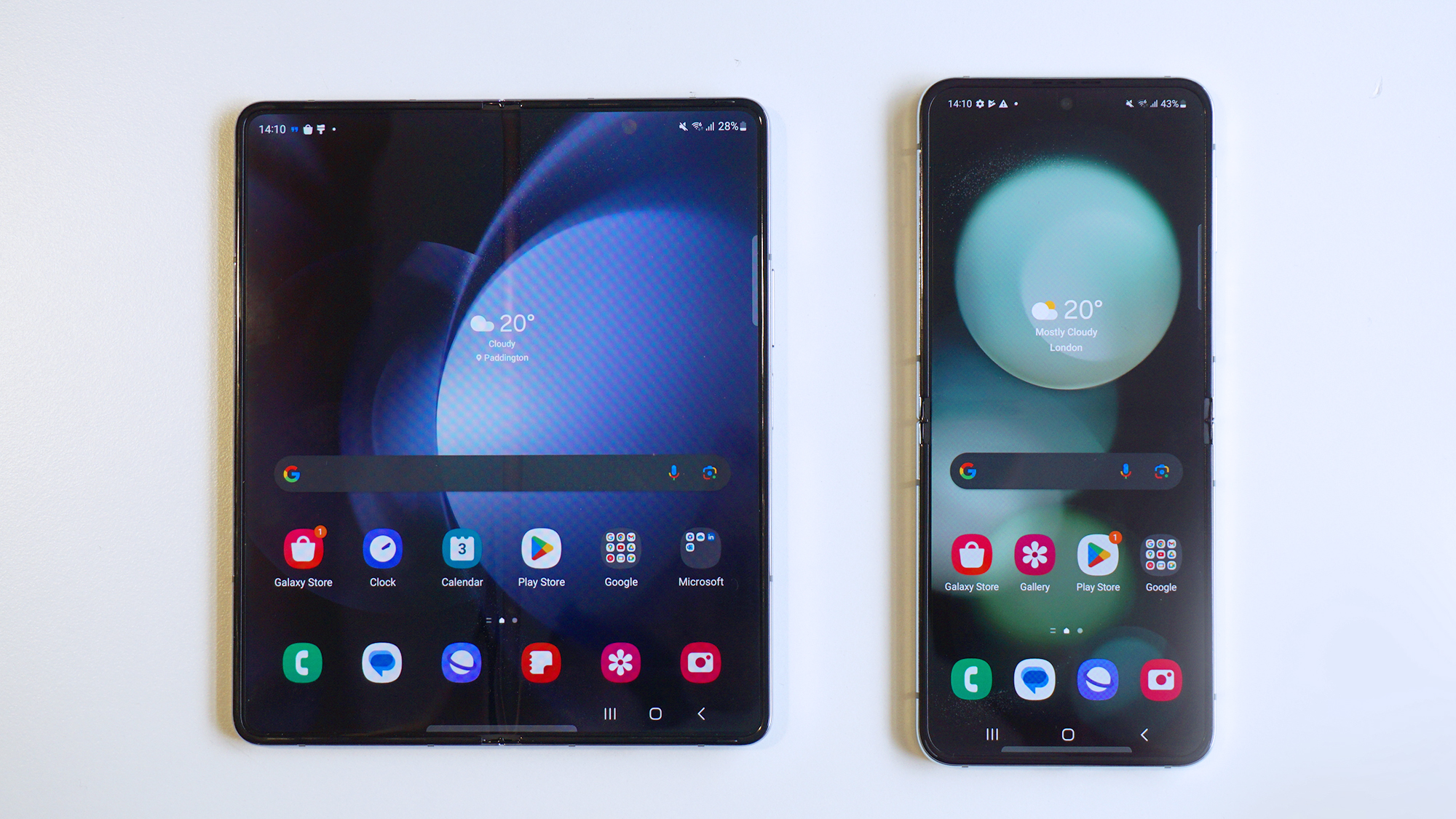
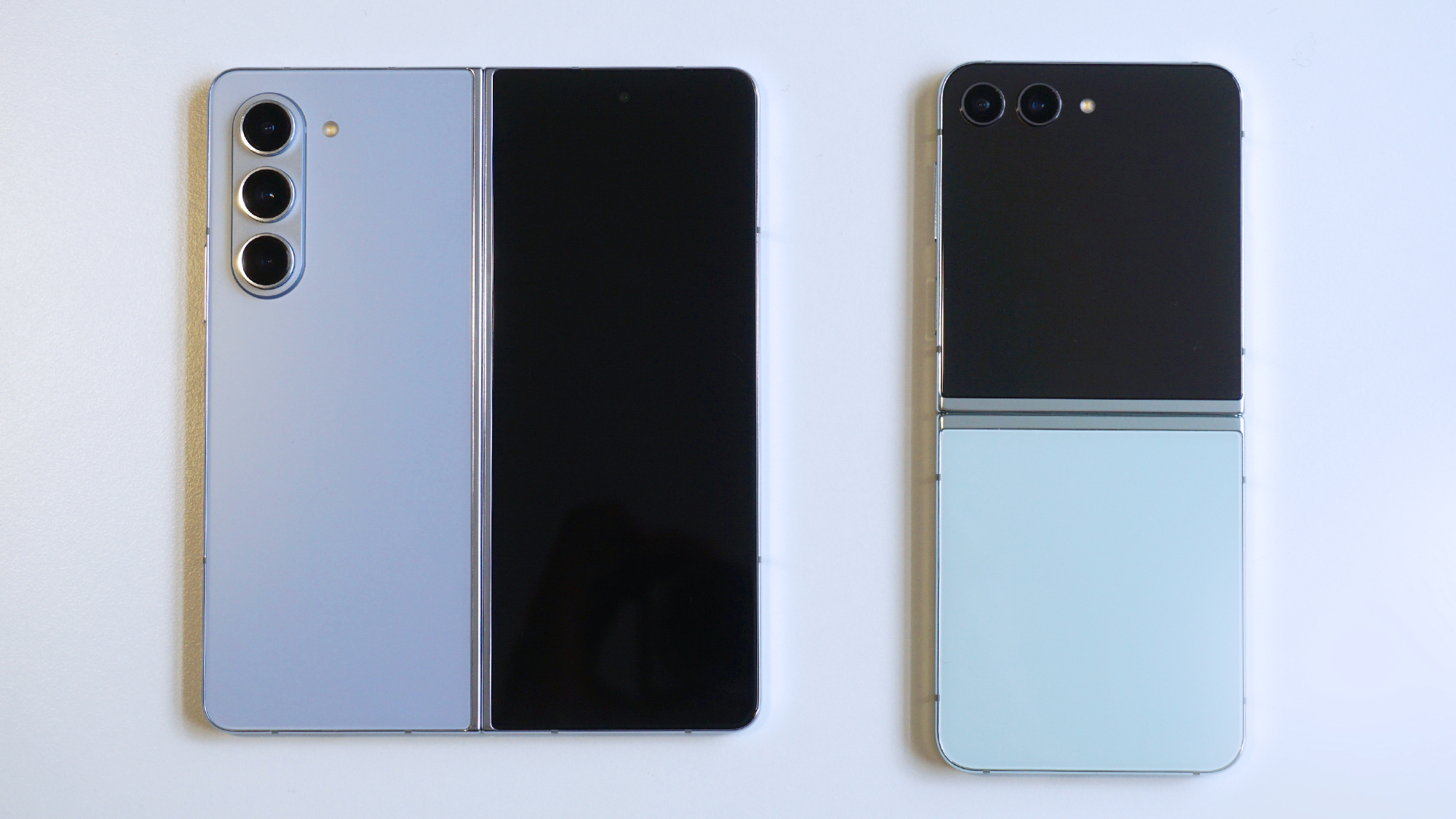
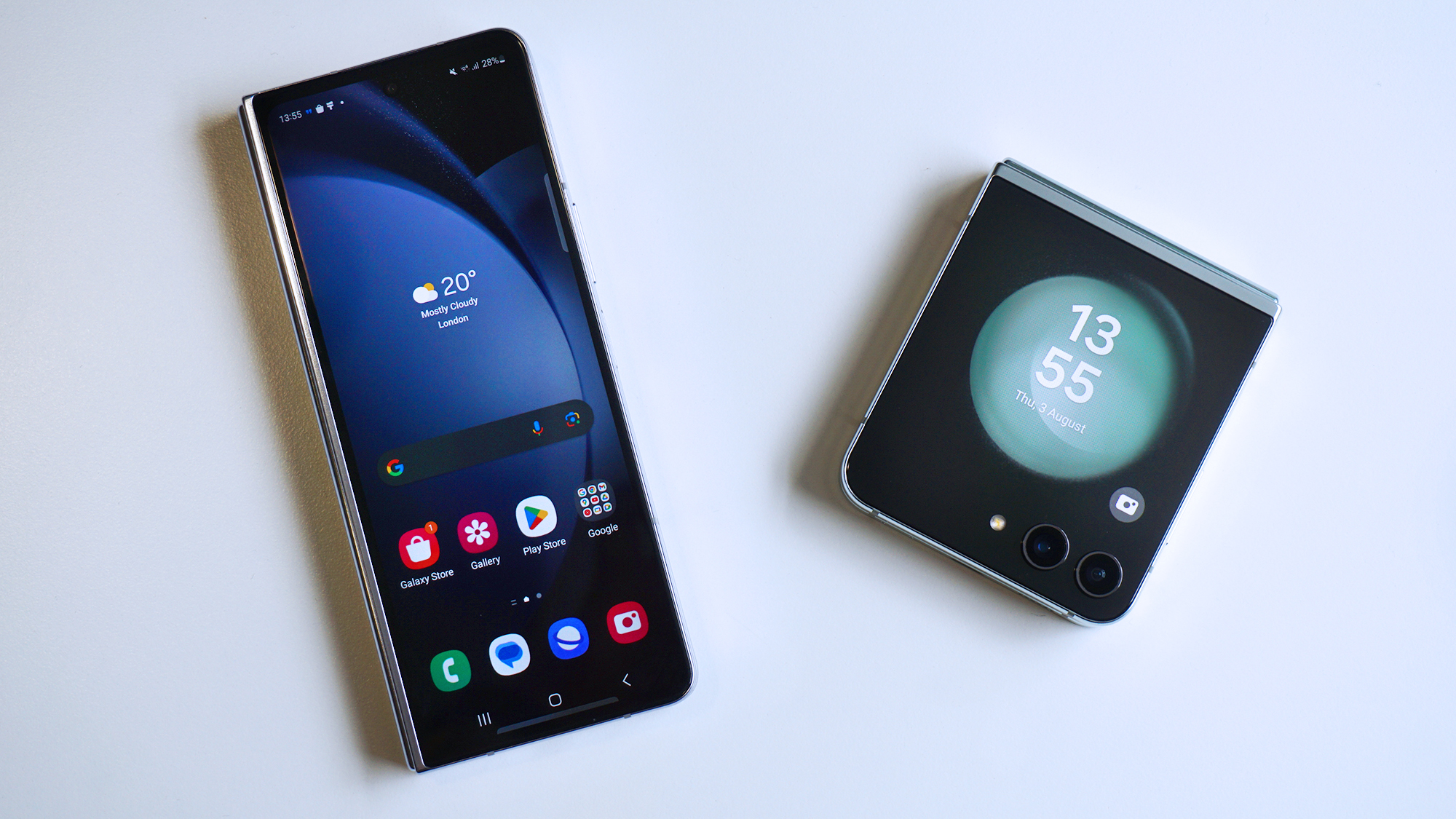
As we mentioned in the intro, both of these foldable phones were announced on July 26, 2023 at Samsung Unpacked, but they didn't go on sale until August 11.
Here's a full price breakdown:
| Header Cell - Column 0 | Z Fold 5 | Z Flip 5 |
|---|---|---|
| 256GB | $1,799.99 / £1,749 / AU$2,599 | $999.99 / £1,049 / AU$1,649 |
| 512GB | $1,919.99 / £1,849 / AU$2,799 | $1,119.99 / £1,149 / AU$1,849 |
| 1TB | $2,159.99 / £2,049 / AU$3,149 | N/A |
US buyers get the greatest value, with prices remaining unchanged across both devices – despite a 100% bump in base storage year on year – compared to their respective predecessors. That means the Galaxy Z Fold 5 can be yours from $1,799.99, while the Galaxy Z Flip 5 starts at $999.99; a difference that highlights each phone's target audience and potential.
Sign up for breaking news, reviews, opinion, top tech deals, and more.
In the UK and Australia both the Fold and Flip 5 clock in as more expensive than their 2022 equivalents, sadly.
Samsung Galaxy Z Fold 5 vs Samsung Galaxy Z Flip 5: Design

If you're familiar with the Samsung Galaxy Z Fold 4 and Galaxy Flip 4, the designs of their successors won't come as much of a shock, save for one distinct difference: this generation of Samsung foldables finally folds flat when closed. Samsung has reworked the hinge mechanism on both of its 2023 foldables so that they finally close with both halves able to cleanly sit parallel to one another. Previous generations consistently hosted a gap that created a wedge-shape profile when closed.
Beyond that, however, the Fold 5 is near enough a dead ringer for the Fold 4, while the Flip 5 sports a more distinct aesthetic shift, namely due to the enlarged cover display that the phone now features on the outside.
These are still some of the hardiest foldables on the market too, with both boasting Gorilla Glass Victus 2, Armor Aluminum frames and IPX8-rated water resistance. Dust susceptibility is still a thing, however, but not unique to Samsung's foldables.
The waterdrop hinge is also rated for 200,000 folds (like previous models), but independent testing suggests they're equipped to go far beyond that before signs of failure, while competing foldables that quote higher figures have fallen short of the mark by comparison.
Size and weight are the clear differentiators here, with the Fold being the bigger, heavier device (252.9g), in order to support its significantly larger folding display, while the Flip 5 is design specifically to be lightweight (187g) and unobtrusive by comparison, all the while still delivering a full-sized primary screen.
The Fold 5's cover screen also sports an awkwardly-thin 23.1:9 aspect ratio, making functionality far less comfortable by comparison to the Z Flip 5's 22:9 main display.
Samsung Galaxy Z Fold 5 vs Samsung Galaxy Z Flip 5: display

Despite a significant thickness and weight reduction between generations, the Galaxy Z Fold 5 sports the same cover and folding display as its predecessor (albeit with even higher peak brightness: 1,200 nits to 1,750 nits). They're great panels, not least because the phone's folding display supports stylus input. However, entrants like the Google Pixel Fold pack displays that are perhaps marginally better suited to both productivity and media playback, due to their more squat aspect ratios.
While the Fold 5's inner and outer screens both function in the way you'd expect a conventional Android smartphone to, the Z Flip 5's newly-enlarged 3.4-inch cover display (up from 1.9-inches on the Z Flip 4) is optimized for glanceable actionable interactions. This means you spend less time on your phone, while still being able to triage notifications and respond to messages (the screen is now just about large enough to support a full typing experience).
It'll fall to your preference, as to whether you want a phone that demands more or less of your time.
Samsung Galaxy Z Fold 5 vs Samsung Galaxy Z Flip 5: cameras
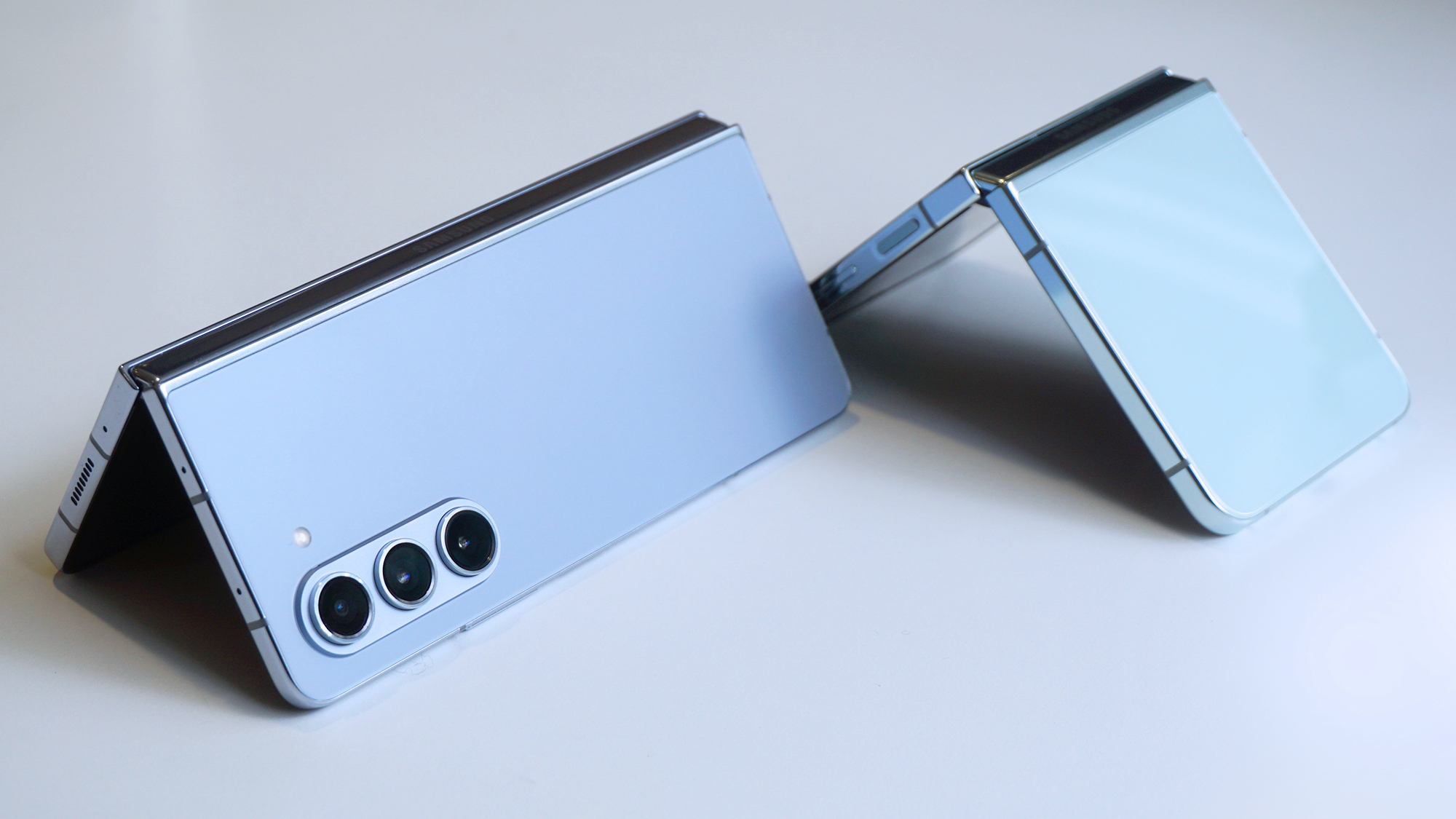
If you’re picking up a theme of incremental change with these two phones, you could be onto something. It certainly continues into the camera department, where – as with last year's Fold and Flip – this year's entrants both possess the same megapixel count across their myriad sensors. 12MP ultra-wides, a 50MP main for the Galaxy Z Fold 5 and a 12MP main for the Galaxy Z Flip 5, while both also sport 10MP front-facing cameras (the internal display of the Fold also possesses an underwhelming 4MP under-display camera).
Thanks to their external displays, both let you shoot high quality selfies using their respective best cameras easily enough, although the Flip has the edge for those who want to shoot a lot of stills and videos where they themselves feature in-frame, without the need for an additional pair of hands. This comes as a result of the main sensor and display all residing on the same side of the phone. With the Z Fold 5, it's a little trickier to use the camera in Flex Mode, as you can't see the outer display while using it to prop-up and angle the cameras.
As for versatility, the larger resolution and triple rear sensor setup of the Fold gives it a photographic edge, with a peak 30x zoom compared to the Flip 5's 10x digital zoom limit, although both have optimizations for popular video chat and social apps the rival Android phones lack.
Samsung Galaxy Z Fold 5 vs Samsung Galaxy Z Flip 5: performance
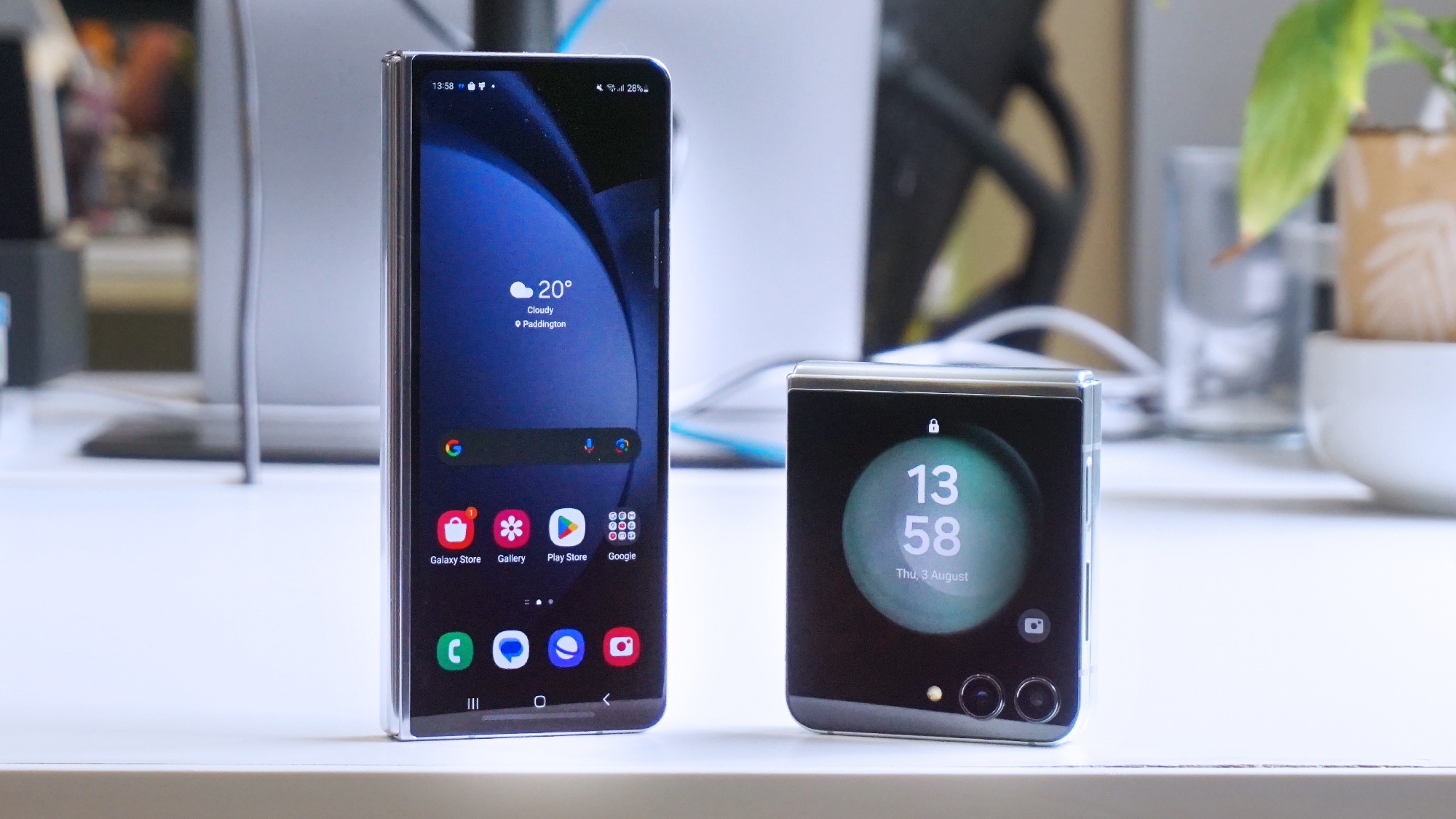
At the heart of both of these phones is the same Snapdragon 8 Gen 2 'for Galaxy' silicon that Qualcomm also injected into the Galaxy S23 range earlier in the year. This marginally overclocked version of one of the most powerful mobile chips of the moment ensures that both phones have plenty of headroom when it comes to app multitasking (especially important on the Z Fold 5) and gaming.
Samsung has also paired that Qualcomm silicon with the latest available standards of RAM (LPDDR5X) and storage (UFS 4.0), which excel over previous generations in terms of both speed and power efficiency. While neither phone offers microSD-expandable storage, they both start at a generous 256GB of space, are both available with 512GB of storage; the Fold 5 can top out at an impressive 1TB. As for memory, the multitasking talents of the Z Fold 5 are supported by 12GB of RAM, while the Flip 5 can only be had with 8GB. However, you're unlikely to find the limitations of either phone's hardware makeup in day-to-day use for years to come.
This is also a good point to mention Samsung's class-leading software support (Fairphone 5 notwithstanding). It trumps even Google in the Android camp by serving up these latest foldables with the promise of four years of OS updates alongside five years of security updates; making them both great long-term buys.
Samsung Galaxy Z Fold 5 vs Samsung Galaxy Z Flip 5: battery
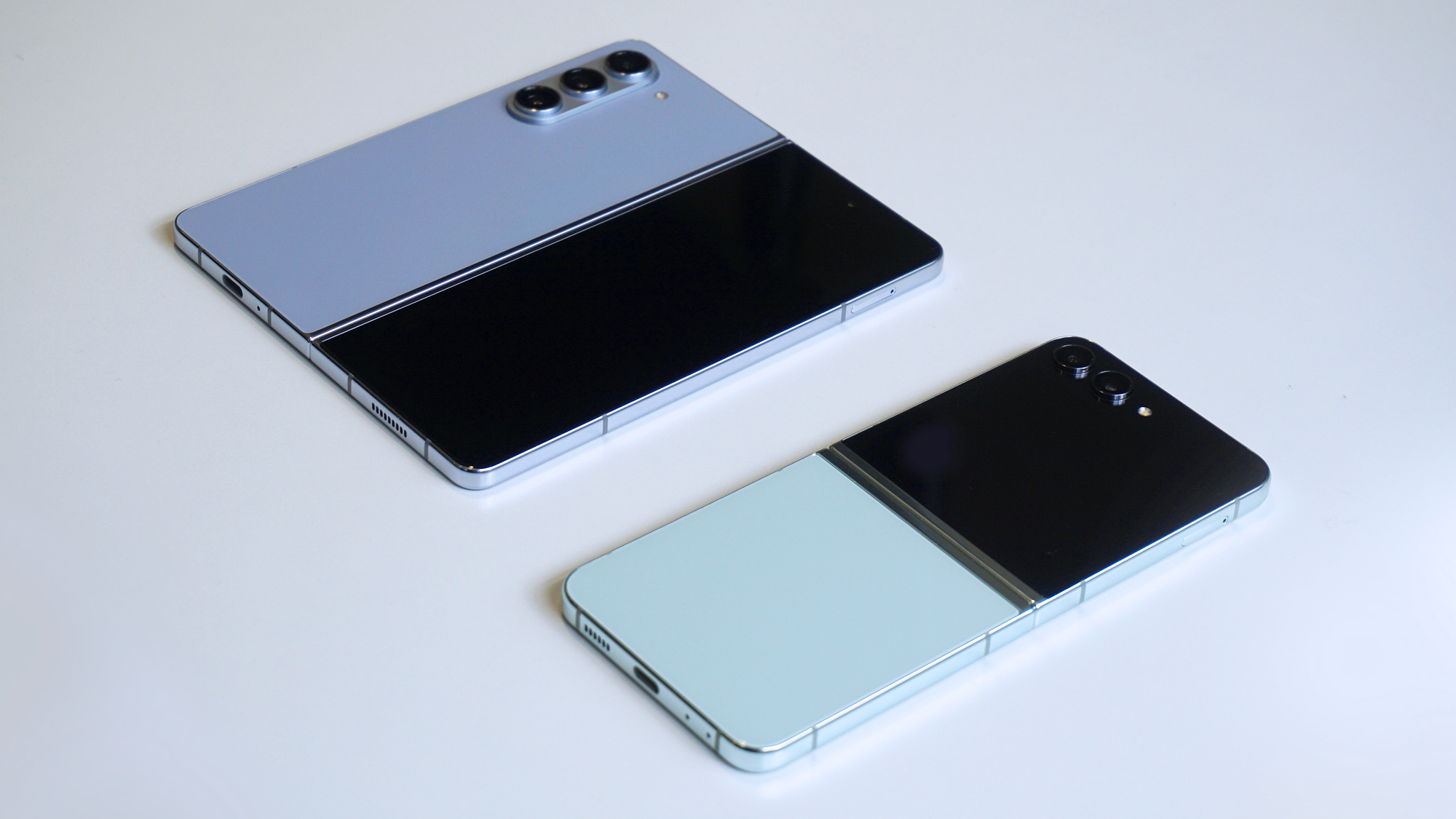
It was a little disheartening at launch to learn that Samsung had seemingly left the battery tech inside both of its latest foldables untouched, compared to their 2022 predecessors. In practice, however, such concerns have proven unfounded.
In the case of the Fold 4 and Fold 5, battery has never really been a concern, with the phone's – admittedly small – 4,400mAh cell able to power both the cover and main display through a full day of use comfortably. The 3,700mAh power pack inside the Z Flip 4 was a different story; it barely serves up more than four hours of screen-on time, demanding sparing use by those who want to make it through a full day on a single charge.
Through grit and determination (and probably more likely software optimization supported by the new, more power efficient chipset, memory and storage), the Z Flip 5 delivers a far more usable 5.5 hours of screen on time that should last all-day under normal usage conditions. It's not class-leading, but it makes Samsung's Flip phones far easier to recommend to those on the fence about their first foldable daily driver.
25W fast charging is behind the curve when you look at rivals like Oppo's answers to the Flip and Fold, the Oppo Find N2 Flip and Oppo Find N2 – which charge at 44W and 67W, respectively – but both of Samsung's phones surpassed their promised 50% charge in 30 minutes in our tests, which feels perfectly acceptable in 2023.
Both phones also boast up to 15W wireless charging and support 4.5W reverse wireless charging (ideal for topping up a smartwatch or wireless earbuds), which are features that not even the average candy bar flagship can deliver.
Samsung Galaxy Z Fold 5 vs Samsung Galaxy Z Flip 5: verdict
Although the updates between generations on both of Samsung's newest foldables feel incremental, they're enough to keep both the Galaxy Z Fold 5 and Z Flip 5 at the top of the pile across their respective form factors.
The Fold 5 is arguably more iterative and will have a harder time competing against the more numerous rival foldables that sport a similar vertical hinge design. The Flip 5, meanwhile, has fewer competitors to face off against, particularly outside of China and especially in markets like the US. It currently only really has to contend with Motorola's Razr Plus, which despite being a 2023 rival, runs on hardware more closely related to the Galaxy Z Flip 4.
When it comes to use cases, the Fold 5 is better suited to creation, productivity and media consumption (thanks to the larger main screen and S Pen support). Meanwhile, the more compact design and expanded cover display make the Z Flip 5 the more social phone; ideal for documenting your life through photos and videos but keeping out of the way when it's no needed so you can be present in the moment.

Alex joined as TechRadar's Senior Phones Editor in June 2022, but brings over a decade's worth of experience to the role, with an expertise in smartphones, tablets and wearables. He's covered keynotes hosted by the biggest brands and attended the launches for some of the most influential mobile products of the last few years. His experience was amassed at some of the most reputable consumer technology publications out there, including GSMArena, TechAdvisor and Trusted Reviews.
- Jon MundyFreelance Contributor